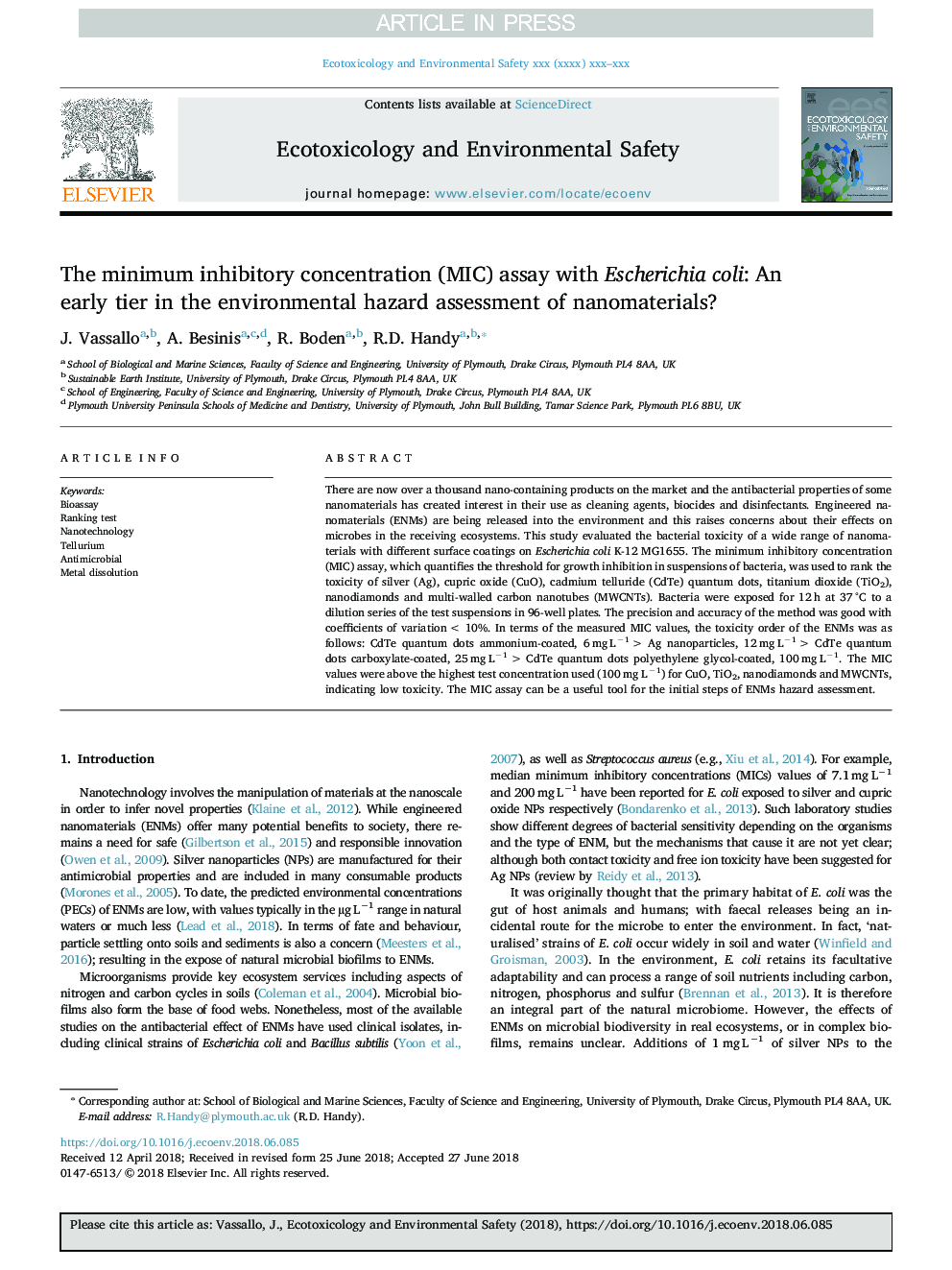| Article ID | Journal | Published Year | Pages | File Type |
|---|---|---|---|---|
| 8853307 | Ecotoxicology and Environmental Safety | 2018 | 14 Pages |
Abstract
There are now over a thousand nano-containing products on the market and the antibacterial properties of some nanomaterials has created interest in their use as cleaning agents, biocides and disinfectants. Engineered nanomaterials (ENMs) are being released into the environment and this raises concerns about their effects on microbes in the receiving ecosystems. This study evaluated the bacterial toxicity of a wide range of nanomaterials with different surface coatings on Escherichia coli K-12 MG1655. The minimum inhibitory concentration (MIC) assay, which quantifies the threshold for growth inhibition in suspensions of bacteria, was used to rank the toxicity of silver (Ag), cupric oxide (CuO), cadmium telluride (CdTe) quantum dots, titanium dioxide (TiO2), nanodiamonds and multi-walled carbon nanotubes (MWCNTs). Bacteria were exposed for 12â¯h at 37â¯Â°C to a dilution series of the test suspensions in 96-well plates. The precision and accuracy of the method was good with coefficients of variation <â¯10%. In terms of the measured MIC values, the toxicity order of the ENMs was as follows: CdTe quantum dots ammonium-coated, 6â¯mgâ¯Lâ1 >â¯Ag nanoparticles, 12â¯mgâ¯Lâ1 >â¯CdTe quantum dots carboxylate-coated, 25â¯mgâ¯Lâ1 >â¯CdTe quantum dots polyethylene glycol-coated, 100â¯mgâ¯Lâ1. The MIC values were above the highest test concentration used (100â¯mgâ¯Lâ1) for CuO, TiO2, nanodiamonds and MWCNTs, indicating low toxicity. The MIC assay can be a useful tool for the initial steps of ENMs hazard assessment.
Related Topics
Life Sciences
Environmental Science
Environmental Chemistry
Authors
J. Vassallo, A. Besinis, R. Boden, R.D. Handy,
